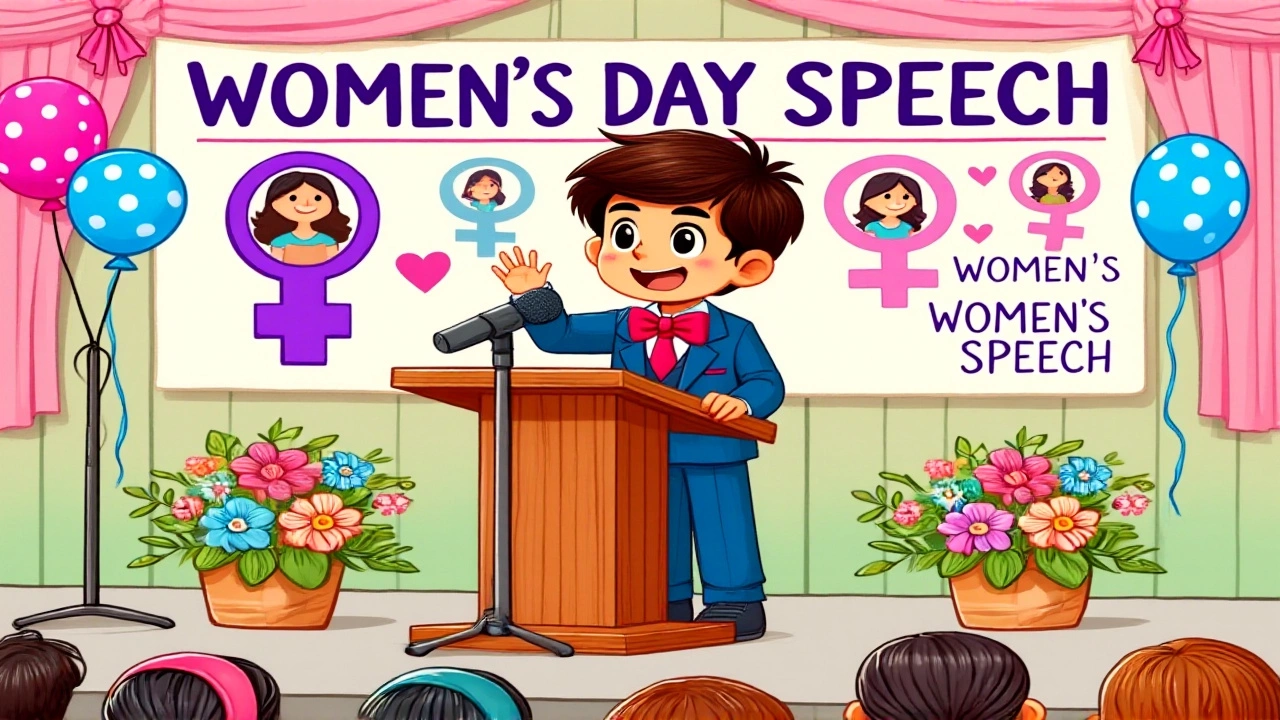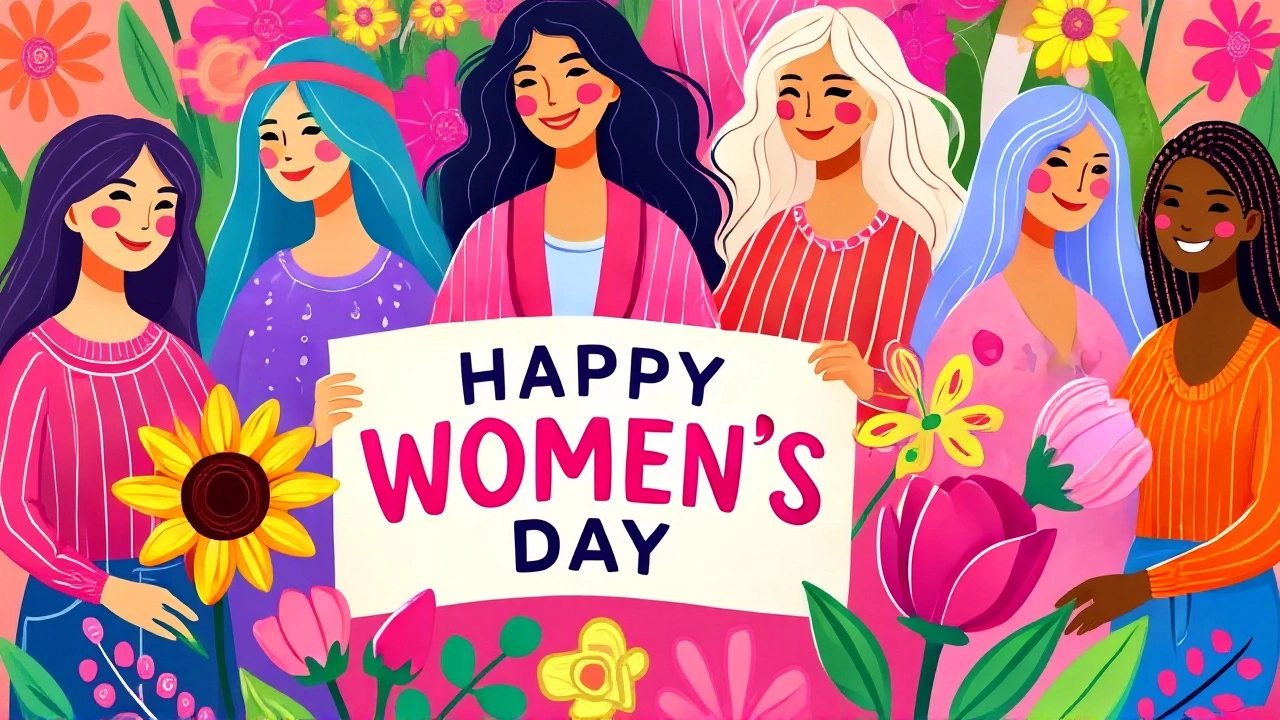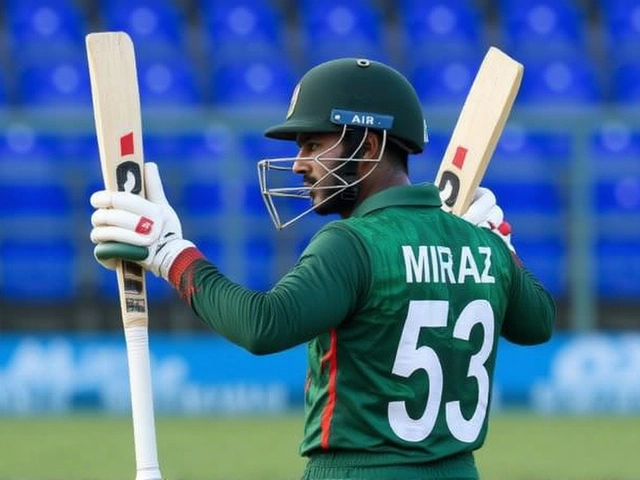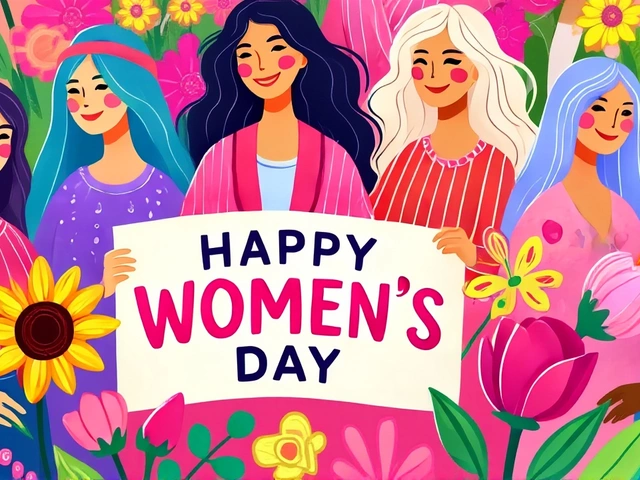On March 8, 2025, India didn’t just mark International Women’s Day—it redefined it. From an all-female crew operating a Vande Bharat Express across the Central Railways network to women taking over Prime Minister Narendra Modi’s social media accounts, the nation turned celebration into action. The theme, ‘For ALL Women and Girls: Rights. Equality. Empowerment’, wasn’t just a slogan. It was a blueprint, tied to the 30th anniversary of the landmark Beijing Declaration, and executed with startling precision across cities, ministries, and digital platforms.
From Speeches to Steel: The National Event in New Delhi
At Vigyan Bhawan in New Delhi, President Droupadi Murmu opened the national conference under the theme ‘Nari Shakti Se Viksit Bharat’—Developed India Through Women’s Power. The room wasn’t filled with ceremonial speeches alone. Panelists included Annpurna Devi, Minister for Women & Child Development, and Savitri Thakur, Minister of State, alongside Anna Bjerde, Managing Director of the World Bank. They didn’t just talk about gender parity—they showed the numbers: 62% of beneficiaries under Pradhan Mantri Mudra Yojana are women, and over 12 million girls have been enrolled under Beti Bachao Beti Padhao since 2015. Digital media zones displayed real-time stories: a woman engineer leading AI research at IIT Madras, a tribal midwife trained under Mission Indradhanush, and a police officer from Rajasthan who cracked a human trafficking ring using facial recognition tech. UNICEF and UN Women had booths, not as observers, but as co-authors of India’s next policy draft.₹11,298 Crore and the Quiet Revolution in Safety
The Government of India didn’t just announce funding—it weaponized it. The Nirbhaya Fund, now at ₹11,298 crore, isn’t just for CCTV cameras or emergency hotlines. It’s funding AI-powered women’s safety apps in 12 major cities, solar-lit pathways in 2,300 villages, and mobile legal aid vans staffed entirely by female lawyers. In Bihar, a pilot project lets women report harassment via voice note, which auto-translates into FIRs in local dialects. No form-filling. No waiting. "This isn’t charity," said Annpurna Devi during the Vigyan Bhawan panel. "It’s infrastructure. Just like roads and power lines, safety is a public utility now. And women aren’t asking for access—they’re demanding ownership."Across India: 5,000 Runners, Handloom Walks, and a Train Full of Women
While New Delhi hosted dignitaries, the real pulse was elsewhere. In Bhubaneswar, over 800 women in traditional Odia handloom saris walked 10 kilometers—not for fitness, but to reclaim space. "We’re not just wearing heritage," said weaver Meena Sahoo. "We’re walking into boardrooms with the same fabric on our backs." In Hyderabad, Commissioner of Police CV Anand watched as over 5,000 women—students, nurses, rickshaw drivers—ran the "Run For Action-2025" route. "They didn’t run to win," he said. "They ran to say: we’re not afraid to be seen." And then there was the train. For the first time ever, a Vande Bharat Express—India’s flagship semi-high-speed train—ran with an all-female crew: a woman captain, a female assistant loco pilot, a female station master coordinating from the control room, and all female attendants. The train departed from Secunderabad at 6:15 a.m. and arrived in Vijayawada at 10:47 a.m. No delays. No drama. Just efficiency.Prime Minister’s Social Media Takeover: A New Kind of Amplification
On March 3, Prime Minister Narendra Modi launched a quiet revolution: women across India uploaded their stories to the NaMo App Open Forum. Over 2.1 million submissions poured in. On March 8, ten women took over Modi’s official Twitter, Instagram, and Facebook accounts for six hours each. One was a 68-year-old grandmother from Jharkhand who taught herself coding after her husband’s death. Another, a Dalit woman from Uttar Pradesh who now trains 300 girls in solar panel installation. Their posts weren’t curated. They were raw. One read: "They told me a widow’s voice doesn’t matter. Today, I’m speaking to 17 million people." The government’s new hashtag, #SheBuildsBharat, trended globally. It wasn’t about inspiration porn. It was about legitimacy.
The Shift: From ‘Women’s Development’ to ‘Women-Led Development’
The real story here isn’t the events. It’s the language shift. For decades, policies spoke of "women’s development"—a passive, recipient-based model. Now, the Ministry of Women and Child Development uses "women-led development." That’s the difference between giving someone a fishing rod and letting them design the entire fishery. The Sukanya Samriddhi Yojana has created over 90 million accounts, with ₹1.8 lakh crore deposited by parents for daughters’ futures. The Pradhan Mantri Matru Vandhana Yojana has delivered ₹5,000 to 58 million pregnant women. These aren’t handouts. They’re equity investments.What’s Next?
By June 2025, the government plans to launch the Women’s Economic Index—a first-of-its-kind metric tracking women’s participation in GDP, entrepreneurship, and public infrastructure decisions. A pilot is already live in Karnataka. Meanwhile, the all-female Vande Bharat crew will become a monthly rotation. And the NaMo App Open Forum? It’s being turned into a permanent digital archive of women’s voices, searchable by sector, region, and impact.Background: The Beijing Legacy
Thirty years ago, 189 nations signed the Beijing Declaration, pledging to eliminate discrimination. India ratified it. But progress was slow. In 2010, only 12% of MPs were women. Today, it’s 15.8%. In 2015, just 14% of startups had female founders. Now, it’s 27%. The numbers are still low. But the momentum? It’s accelerating.Frequently Asked Questions
How does the all-female Vande Bharat crew impact women in STEM and transport jobs?
The all-female crew isn’t just symbolic—it’s structural. Central Railways has already recruited 120 more female locomotive engineers for training, and 87% of applicants for the next round are women under 30. The visibility breaks the myth that technical roles are male-only. In fact, applications for railway apprenticeships among girls rose 40% within 72 hours of the train’s launch.
Why is the Nirbhaya Fund’s ₹11,298 crore allocation significant?
This is the largest single allocation for women’s safety in India’s history—nearly 30% higher than last year’s budget. Crucially, 65% of the funds are now tied to measurable outcomes: reduction in assault reports, increased use of safety apps, and faster police response times. Unlike past allocations, this one includes third-party audits by the National Commission for Women.
What’s the difference between Beti Bachao Beti Padhao and Sukanya Samriddhi Yojana?
Beti Bachao Beti Padhao focuses on preventing gender-biased sex selection and ensuring girls’ education, with campaigns in 640 districts. Sukanya Samriddhi Yojana is a savings scheme—parents open accounts for daughters under 10, earning 8.2% interest, tax-free, to fund higher education or marriage. One tackles societal attitudes; the other builds financial security.
How are women’s stories on PM Modi’s social media being used beyond March 8?
The selected stories are being archived in a publicly accessible digital repository called "Voices of Bharat," integrated into school curricula and government policy briefs. Five women’s narratives are now part of the National Skill Development Corporation’s training modules for entrepreneurship. This turns personal testimony into public policy fuel.
Are international organizations like the World Bank and UN Women just observers, or are they influencing policy?
They’re co-designers. The World Bank helped structure the Women’s Economic Index and funded the AI safety app pilot in Hyderabad. UN Women provided gender-responsive budgeting training to 18 state finance departments. Their role isn’t advisory—it’s operational. India is treating them as equal partners, not donors.
What’s the long-term goal of shifting from ‘women’s development’ to ‘women-led development’?
The goal is to make women the architects of growth, not its beneficiaries. That means women leading infrastructure projects, shaping tax policy, and heading public sector banks. By 2030, the government aims for 40% of public procurement contracts to go to women-owned businesses—a target already being tested in Tamil Nadu and Kerala with 32% success.






